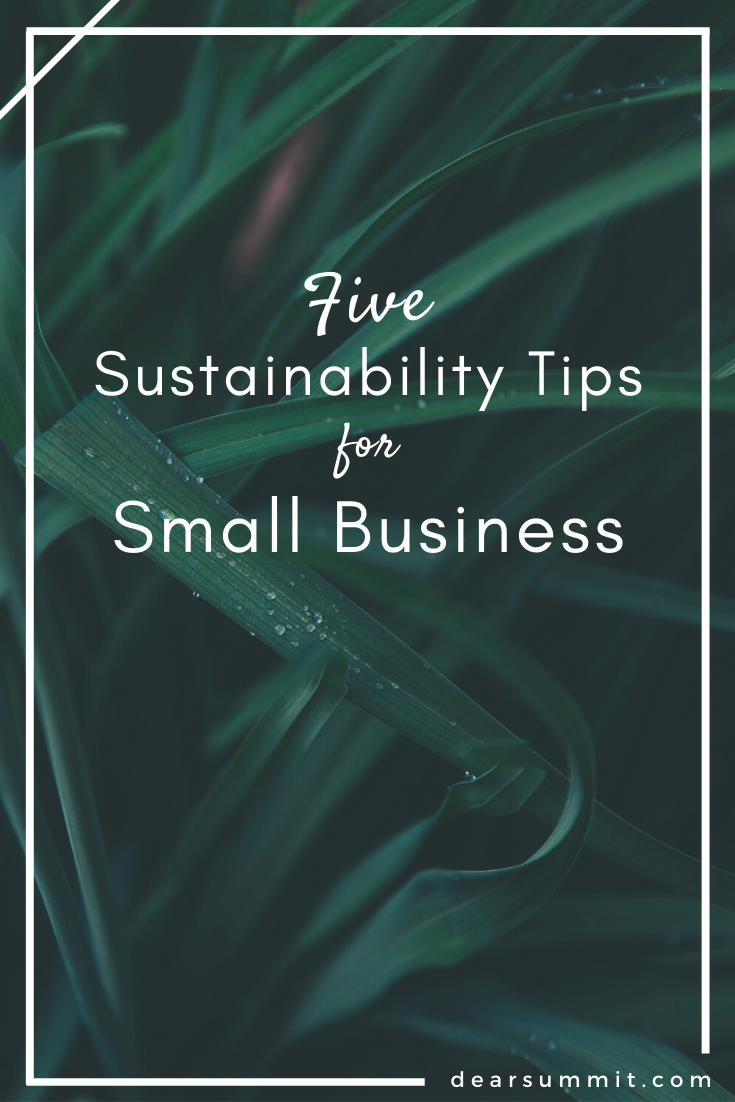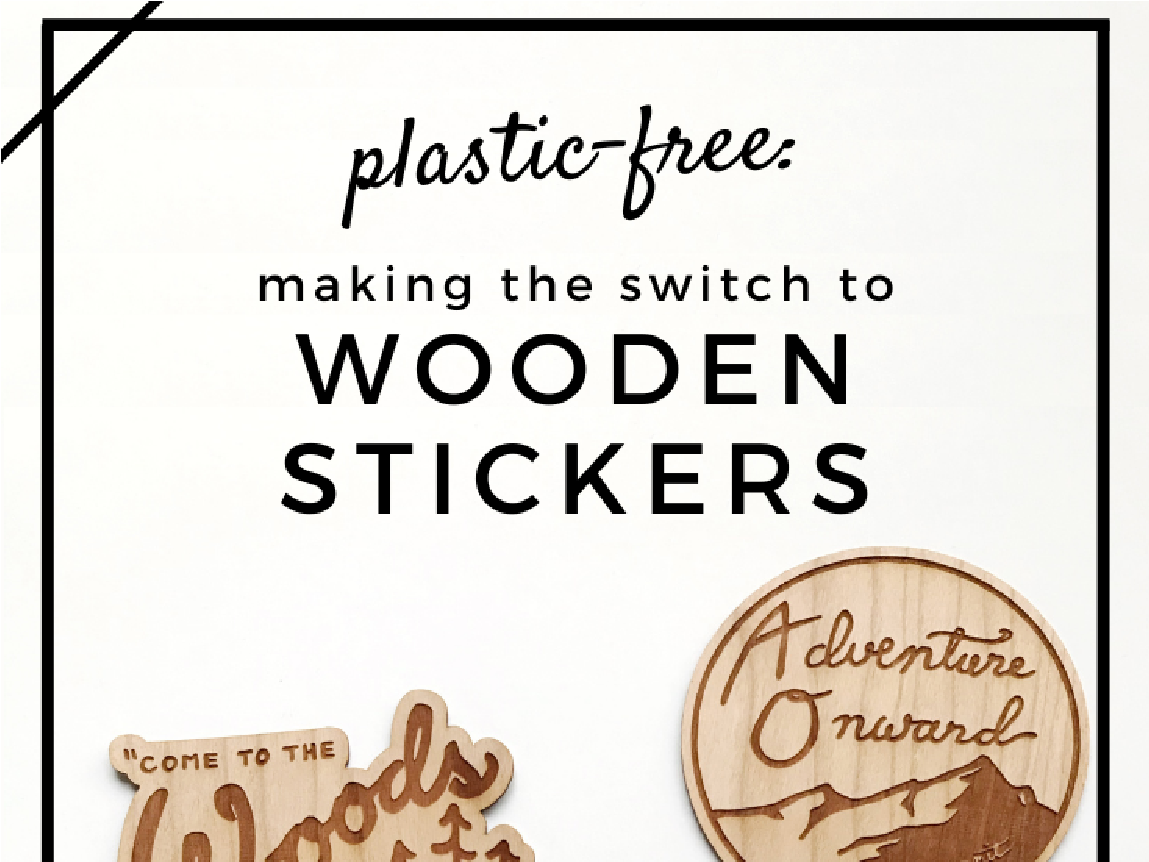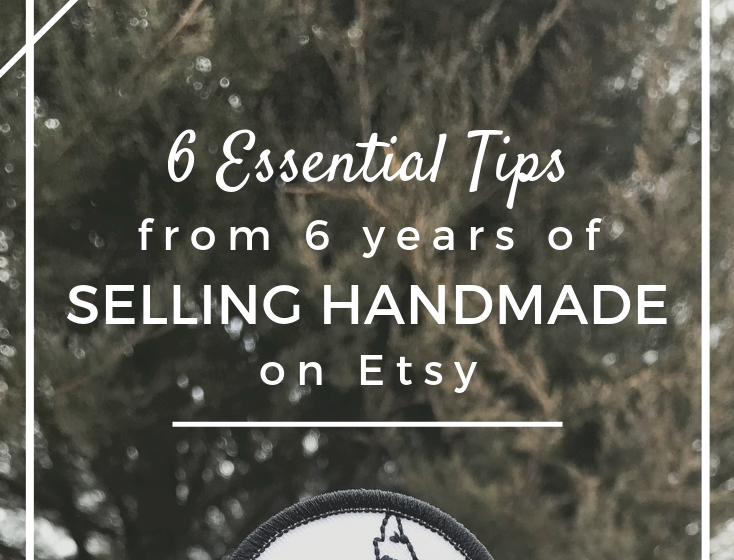If you’re a maker or artist or other product-based business, and especially if your work is inspired by nature, you can do quite a lot (more than you might think!) to make your business more eco-friendly. Your business really can make a big difference, whether you have 20 employees, or you’re rocking the solo-preneur life.
But making shifts toward sustainability doesn’t have to be a complicated or huge undertaking. These are five relatively easy things you can do to make your business more ecologically responsible, and which don’t take a lot of time to implement.
SWITCH TO RECYCLED PAPER
Did you know that paper products account for 10% of deforestation across the world? And that up to 30% of all wood traded in the world was logged illegally - often destroying rainforests and other sensitive habitats for countless endangered species?
Switching to recycled paper in your business can help to not only reduce the demand for virgin paper products (and therefore, reduce the demand for logging and deforestation), but will also reduce carbon emissions. In fact, recycled paper accounts for a lower carbon dioxide footprint of 5 pounds per ream, 35% less water pollution, uses 40% less energy, and produces 74% less air pollution according to the EPA.
Next time you restock your paper products, switch to recycled paper - opt for 100% post-consumer content:
Printer paper
Business cards
Promotional or informational cards that you include when you ship orders
If you sell art prints or greeting cards, consider finding a recycled alternative to your current paper stock.
TURN IT OFF (AND UNPLUG IT)
“Vampire” power usage - when an electronic is on standby mode, idle, or turned off but still plugged in and consuming electricity - accounts for 5-10% of your power consumption, on average, and about 1% of worldwide carbon emissions, according to the experts.
Shut down your electronics and other equipment when they’re not being used, or at the end of your workday. If your printer has an option to automatically shut off when it’s not being used, take advantage of it.
Even better, unplug devices when they’re turned off (but turn them off before unplugging them!), as many devices will still draw power from the outlet, even when turned off. To make this super easy, consider using a “smart” power strip, which senses when the devices plugged into it are turned off, and it powers off.
ELIMINATE THE UNNECESSARY
This plays into the three R’s of recycling: Reduce, Reuse, and Recycle. We often overlook the first two and focus on the last, recycle, but I urge you to consider what you can feasibly reduce, first. Most orders don't really need a printed packing slip - their order information should be easily accessible in their email and on your website, in the uncommon event that they should need that information again once the item arrives. If you sell at shows or your own storefront, ask each customer if they want a printed receipt instead of giving them one by default.
Product packaging is probably one of the worst-offending categories in your business; did you know that packaging is typically immediately thrown away by the customer and comprises one third of all trash?
Some components of your packaging that you might consider reducing or eliminating:
Plastic bags and sleeves that individually wrap your products. (Does that rad t-shirt you’re about to ship really need a poly bag? Can you wrap your prints in a pretty, recycled tissue paper instead?)
Swift tags, the little plastic ties used to attach hang tags to clothing and other goods, can be replaced by safety pins and cotton string.
Exceptions to some of these might be for wholesale orders. Most wholesale buyers do want a packing slip included in each shipment, and unfortunately plastic sleeves are necessary for art prints in most cases. Try to find a bio-plastic or recycled + recyclable option instead of the conventional plastics!
DITCH THE DISPOSABLES
Whether your workspace (like mine) is a corner of your home, or you have a fully-functioning office space with a fleet of employees, instituting a no-single-use policy is another easy way to make your business more sustainable.
At the very least, it means switching from disposable plastic water bottles to a reusable bottle, getting your coffee in a reusable mug instead of a paper to-go cup, and using your own straws and cutlery instead of the disposable plastic ones restaurants include with your food.
If you have a break room, ditch the single-use coffee pods and paper cups (which typically can’t be recycled) for an ‘old fashioned’ coffee station, complete with fun ceramic mugs and metal cutlery for everyone to use (and re-use).
SHARE ABOUT YOUR EFFORTS
Post about your sustainability efforts on your social media, write a blog post, or start a sustainability page on your website, even if you’re just getting started.
Your customers will likely be excited to know that the company/artist/maker they love to buy from (you!) cares about the environment and is taking real steps to be more sustainable. This is especially true for nature-inspired businesses; chances are pretty good that if your customer loves nature as much as you do, they also care about the wellbeing and future of nature as much as you do. They’ll love you and your work all the more when they learn about your sustainability efforts!
Transparency is also increasingly an aspect that consumers look for when learning about a business for the first time. It’s one thing to say that your business is eco-friendly, but entirely different to lay out as much as you reasonably can about exactly how your business is putting sustainability into practice. The more you can share, the better.
And, by sharing about your own sustainability journey, you may just inspire your customers to make changes toward sustainability, themselves!
Each of these points probably deserves a deeper dive and could be a whole blog post on their own, but hopefully they give you some good ideas to start shifting your business towards environmental responsibility. Every change you make in the right direction is a change that matters. A bonus is that several of these changes should also save your business money especially cutting back on “vampire” power usage and eliminating the unnecessary.
Pick one thing in this list to work on today, and then work your way through the rest from there!
What is one change you’ve made recently in your business to become more sustainable?
↟↟↟
Enjoy this post? Want more?
Join my Outsiders email list to keep up with new blog posts, adventure tips, and get the best deals on nature-inspired gear in the Dear Summit Shop!
You might also like:





